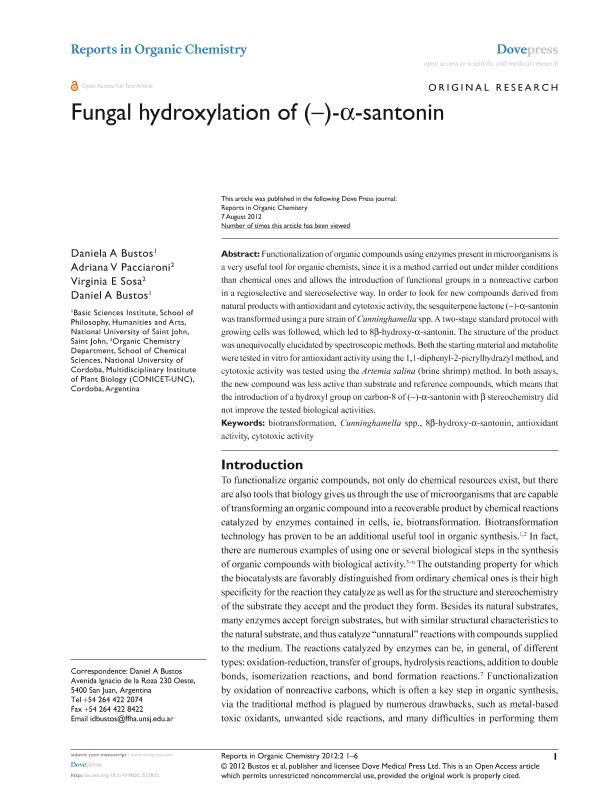Artículo
Fungal hydroxylation of (-)-α-santonin
Fecha de publicación:
08/08/2012
Editorial:
Dovepress
Revista:
Reports in Organic Chemistry
ISSN:
2230-5246
Idioma:
Inglés
Tipo de recurso:
Artículo publicado
Clasificación temática:
Resumen
Functionalization of organic compounds using enzymes present in microorganisms is a very useful tool for organic chemists, since it is a method carried out under milder conditions than chemical ones and allows the introduction of functional groups in a nonreactive carbon in a regioselective and stereoselective way. In order to look for new compounds derived from natural products with antioxidant and cytotoxic activity, the sesquiterpene lactone (-)-α-santonin was transformed using a pure strain of Cunninghamella spp. A two-stage standard protocol with growing cells was followed, which led to 8β-hydroxy-α-santonin. The structure of the product was unequivocally elucidated by spectroscopic methods. Both the starting material and metabolite were tested in vitro for antioxidant activity using the 1,1-diphenyl-2-picrylhydrazyl method, and cytotoxic activity was tested using the Artemia salina (brine shrimp) method. In both assays, the new compound was less active than substrate and reference compounds, which means that the introduction of a hydroxyl group on carbon-8 of (-)-α-santonin with β stereochemistry did not improve the tested biological activities
Archivos asociados
Licencia
Identificadores
Colecciones
Articulos(IMBIV)
Articulos de INST.MULTIDISCIPL.DE BIOLOGIA VEGETAL (P)
Articulos de INST.MULTIDISCIPL.DE BIOLOGIA VEGETAL (P)
Citación
Bustos, Daniela; Pacciaroni, Adriana del Valle; Bustos, Daniela A.; Sosa, Virginia Estela; Fungal hydroxylation of (-)-α-santonin; Dovepress; Reports in Organic Chemistry; 2; 8-8-2012; 1-6
Compartir
Altmétricas




